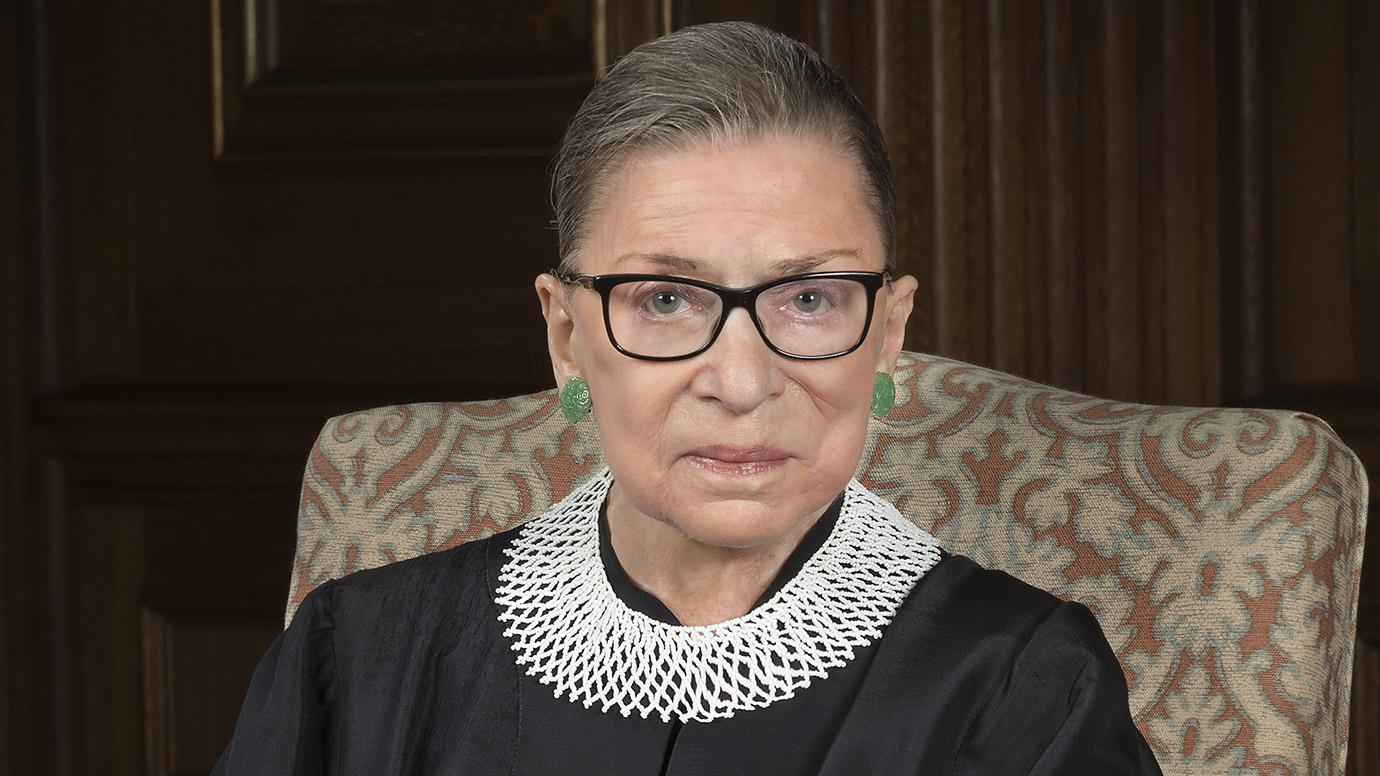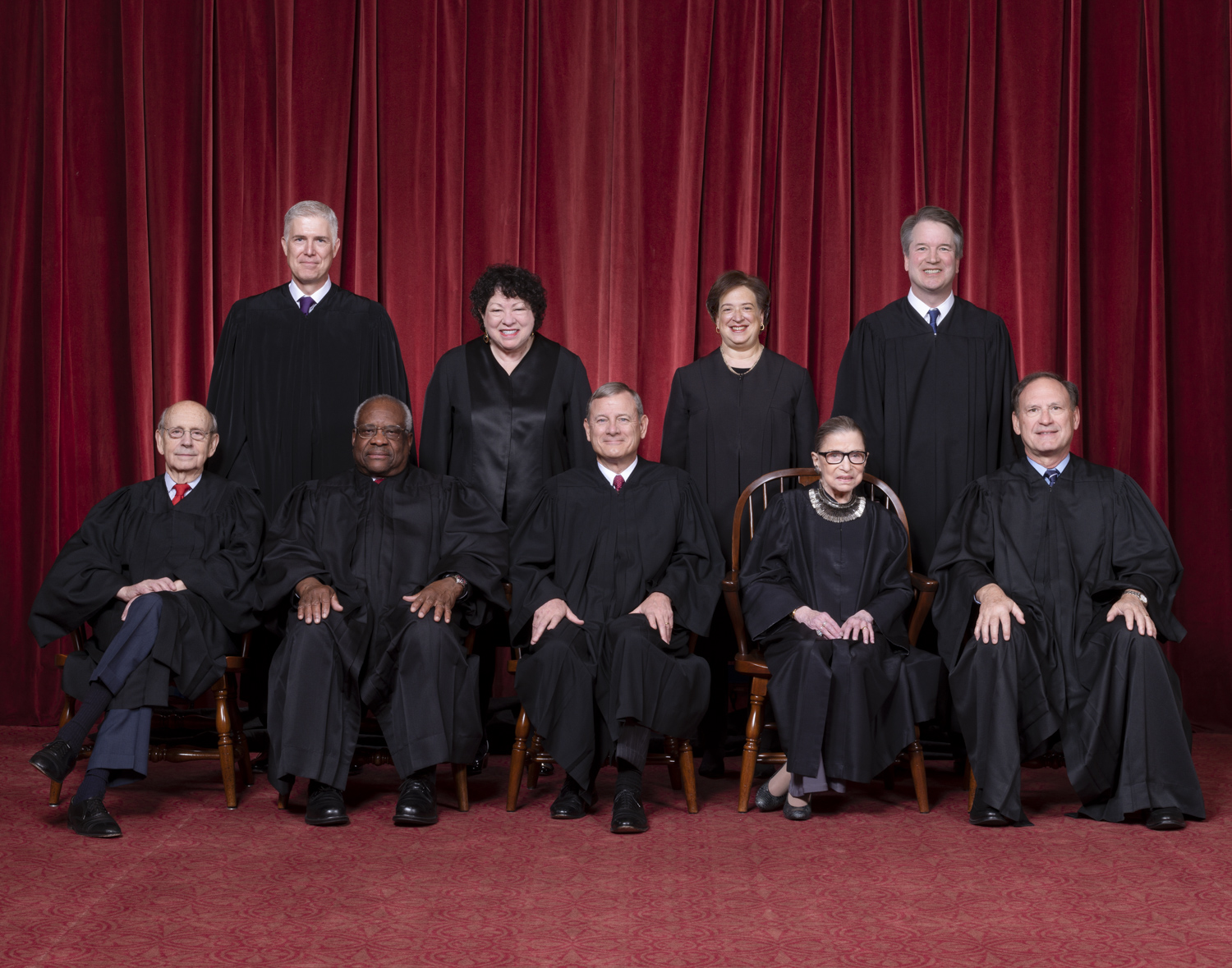
Supreme Court Justice and feminist icon Ruth Bader Ginsburg died at her home in Washington, DC, on September 18, 2020, from complications of metastatic pancreatic cancer. The 87-year-old, who was appointed to the nation's highest court by President Bill Clinton in 1993, was the longest sitting Supreme Court Justice. She was also only the second woman, after Justice Sandra Day O'Connor, to serve in this position.
"Our Nation has lost a jurist of historic stature," Chief Justice John Roberts said in a statement on Friday. "We at the Supreme Court have lost a cherished colleague. Today we mourn, but with confidence, that future generations will remember Justice Ruth Bader Ginsburg as we knew her -- a tireless and resolute champion of justice."
Joan Ruth Bader was born in Brooklyn, New York, on March 15, 1933, to Jewish immigrants, Celia and Nathan Bader. An excellent student from a young age, she was granted a full scholarship to Cornell University during a time when few women attempted higher education. It was here that Ms. Ginsburg, who was pursuing a bachelor's degree in government, met Martin (aka "Marty") Ginsburg, who she married shortly after graduating in 1954.
The young couple moved to Fort Sill, Oklahoma, for Marty's Reserve Officers' Training Corps (ROTC) military training. It was here that Ms. Ginsburg had her first real encounter with workplace discrimination against women. Despite scoring high on the civil service exam, she was only offered a position as a typist. She lost even that job when she became pregnant with their first child.

Two years later, Marty was accepted to Harvard Law School, and the Ginsburgs moved back to the East Coast. A year later, Ms. Ginsburg was admitted to the program as well. However, as one of only nine women in a class of 500, she faced similar discrimination at the Ivy League school, and was even asked by the dean about why she was occupying a space that "should go to a man." To make matters worse, Marty was diagnosed with testicular cancer shortly after. "So that left Ruth with a 3-year-old child, a fairly sick husband, the law review, classes to attend and feeding me," Marty said in a 1993 interview with NPR.
Fortunately, Marty recovered, and, upon graduation, accepted a position at a law firm in New York. Ms. Ginsburg, who still had a year of education left, transferred to Columbia University to complete her law degree. However, despite graduating at the top of her class, she could not find a job at a law firm. She was even recommended for a Supreme Court clerkship but was never interviewed for the position. It was not until her mentor, Columbia law professor Gerald Gunther, persuaded Federal District Court Judge Edmund Palmieri to hire her that she finally garnered her first clerkship. Palmieri was so impressed with Ms. Ginsburg's work that he extended her position for a second year.
In 1963, Ms. Ginsburg landed a teaching job at Rutgers Law School, and it was here that she began her quest to fight gender discrimination. However, instead of seeking out female clients, she focused on taking cases where men were challenging the unfair laws. She believed fighting against laws that promoted gender biases would be beneficial to all. It would also be easy to convince the then-all-male Supreme Court to make the change if the plaintiffs were males.
For example, in one of her cases, her plaintiff was a man whose wife, the primary bread earner, had died while giving birth. The husband, who wanted to spend more time with his newborn, was fighting to obtain Social Security benefits, which under the existing laws at the time were only available to widows, not widowers.

Ms. Ginsburg's superior oratory skills, which won her five of the six cases she presented to the Supreme Court, led President Jimmy Carter to nominate her to the US Court of Appeals for the District of Columbia in 1980. In 1993, President Bill Clinton sought her out to fill the Supreme Court seat vacated by retiring Justice Byron White. Though she was not the first person on his list, it took just one meeting with Ms. Ginsburg to convince the president she was the right person for this all-important life-long appointment. She had a similar effect on the bipartisan Senate, who confirmed her appointment with a resounding 96-3 vote.
During her 27 years as a Supreme Court Justice, Ms. Ginsburg often argued against unfair laws. However, her most passionate dissents were always to defend women's rights issues. One of her biggest wins was a 1996 ruling reversing the long-standing male-only admission policy at the state-funded Virginia Military Institute.
Though she appeared frail and tiny, Ms. Ginsburg, who stood just over five-feet-tall, seemed to have unlimited energy, both inside and outside the courtroom. She rode horses well into her 70s and even went parasailing. An ardent fan of the opera, she starred in a non-singing role as the Duchess of Krakenthorp on the opening night of the Daughter of the Regiment in 2016. Her intense daily workout routine, which included pushups, planks, and weight-lifting exercises, prompted her longtime personal trainer Bryant Johnson, to write a book about how Ms. Ginsburg remained strong through her 11-year battle with cancer.

Ms. Ginsburg, who is survived by her two children and two grandchildren, will lie in repose under the portico at the top of the Supreme Court building's front steps on September 23 and September 24, for public viewing. "The public is invited to pay respects in front of the Building from approximately 11 a.m. until 10 p.m. on Wednesday, September 23, and from 9 a.m. until 10 p.m. on Thursday, September 24," the court said in a statement.
The trailblazer will be laid to rest at Arlington National Cemetery next to her husband Marty, who died in 2010, on Tuesday, September 29, 2020 — the day after Yom Kippur, the holiest day of the Jewish year.
Ms. Ginsburg's determination to level the playing field for people of all color, gender, race, and religion will continue to inspire people worldwide to fight injustices. As Ms. Ginsburg succinctly said, "Fight for the things that you care about. But do it in a way that will lead others to join you."
May Her Memory Be A Blessing
Justice Ruth Bader Ginsburg
(1933 — 2020)
Resources: NPR.org, CNN.com, wikipedia.org, theconversation.com
